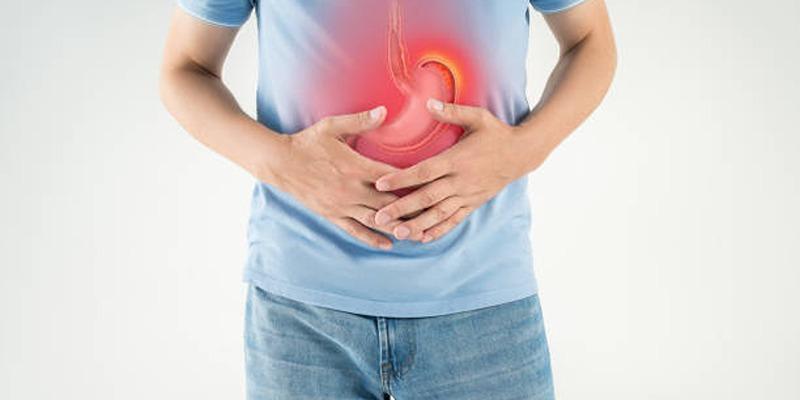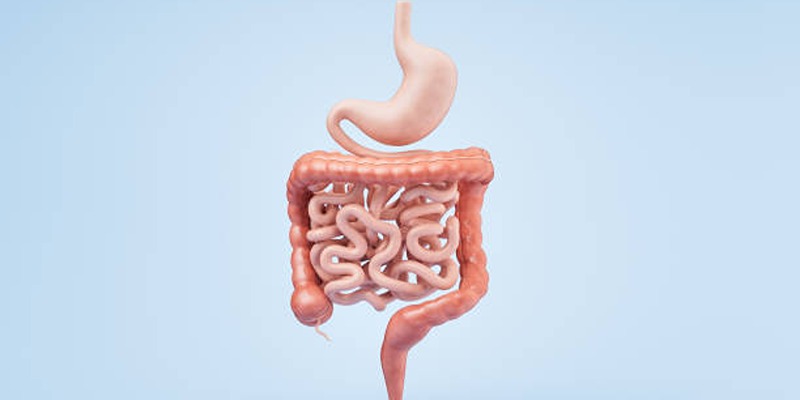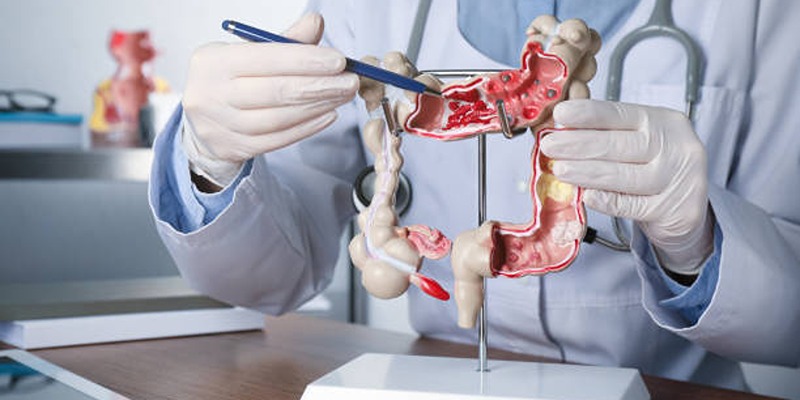Recognizing the Symptoms of Cyclosporiasis: A Complete Guide
Advertisement
Cyclosporiasis is an intestinal infection caused by the parasite Cyclospora cayetanensis, typically spread through contaminated food or water. While this illness is not widely known, it can lead to significant discomfort and health complications if left untreated. Recognizing the symptoms early is crucial for receiving timely medical care and preventing further spread. Commonly associated with outbreaks linked to fresh produce, cyclosporiasis poses a risk to individuals across various regions, particularly in areas with poor sanitation. This guide will help you identify the symptoms and understand the steps for proper diagnosis and treatment.
What is Cyclosporiasis?
 The parasitic disease Cyclosporiasis exists as a foodborne illness that occurs when people eat or drink contaminated food substances carrying Cyclospora cayetanensis oocysts. The infection route starts when body tissue allows the parasite to enter the small intestine where it generates multiple intestinal complications.
The parasitic disease Cyclosporiasis exists as a foodborne illness that occurs when people eat or drink contaminated food substances carrying Cyclospora cayetanensis oocysts. The infection route starts when body tissue allows the parasite to enter the small intestine where it generates multiple intestinal complications.
Spread of the infection occurs rarely between different individuals. Humans acquire infection through their food consumption of contaminated unwashed fruits, vegetables and drinking water containing this parasite. The primary foods that catch Cyclospora infections are berries leafy greens basil and imported fresh produce.
Once someone gets infected they develop symptoms during 1-2 weeks and continued neglect leads to a weeks-long sickness period.
Common Symptoms of Cyclosporiasis
The symptoms associated with cyclosporiasis present in different intensities from mild to severe. Infected persons experience mostly digestive symptoms which lead to substantial daily life impairment.
1. Persistent Watery Diarrhea
The most common and noticeable symptom of Cyclosporiasis is severe watery diarrhea. The stool is often loose, frequent, and explosive, making it difficult for the body to retain essential fluids.
Diarrhea caused by Cyclosporiasis can last several days to weeks, leading to significant dehydration if not managed properly. Some people may experience diarrhea multiple times a day, making daily activities difficult.
2. Abdominal Cramps and Pain
The infection causes inflammation in the intestines, leading to abdominal cramping and pain. These cramps can be mild to severe, depending on the severity of the infection. Some people describe the pain as a constant dull ache, while others experience sharp, wave-like cramps that come and go.
3. Nausea and Vomiting
Nausea is another frequent symptom of Cyclosporiasis. Some individuals may also vomit, which further increases the risk of dehydration. Loss of fluids and electrolytes due to vomiting can cause dizziness, weakness, and a feeling of general discomfort.
4. Fatigue and Weakness
The constant loss of fluids and nutrients due to diarrhea and vomiting can result in extreme fatigue and weakness. People with Cyclosporiasis often feel drained of energy and find it difficult to perform daily activities. The body's inability to absorb nutrients properly due to the parasite’s presence further contributes to exhaustion.
5. Bloating and Gas
Many individuals infected with Cyclospora experience bloating and excessive gas. The infection disrupts normal digestion, leading to trapped gas, stomach distension, and discomfort. This can make eating and drinking uncomfortable, worsening other digestive symptoms.
6. Low-Grade Fever
A mild fever may accompany other symptoms as the body attempts to fight off the infection. However, not everyone with Cyclosporiasis will develop a fever. If present, the fever is usually low-grade (below 100°F or 38°C) and may come and go throughout the illness.
7. Loss of Appetite
Due to persistent nausea and digestive distress, many people lose their appetite. The body struggles to process food, and eating may cause further discomfort, leading to reduced food intake and unintentional weight loss over time.
Complications of Cyclosporiasis
Cyclosporiasis can lead to serious complications if left untreated. These include dehydration, malnutrition, and reactive arthritis.
1. Severe Dehydration
Frequent diarrhea and vomiting can lead to severe dehydration, a dangerous condition that requires immediate medical attention. Symptoms of dehydration include:
- Extreme thirst
- Dry mouth and skin
- Dizziness or lightheadedness
- Dark-colored urine or decreased urination
- Rapid heartbeat
- Confusion or fainting
Children, older adults, and people with weakened immune systems are at higher risk of complications from dehydration.
2. Malnutrition and Weakness
The parasite prevents the small intestine from properly absorbing nutrients, leading to malnutrition and weakness. This is particularly dangerous for young children, and individuals with underlying health conditions.
How is Cyclosporiasis Diagnosed?
Cyclosporiasis can be challenging to diagnose as it shares symptoms with other gastrointestinal illnesses. Doctors will typically perform a physical exam, review medical history, and request stool samples for laboratory testing.
1. Stool Sample Test
A stool sample test is the most common way to diagnose Cyclosporiasis. Since the parasite may not always be present in a single sample, multiple tests may be required for confirmation.
2. Blood Tests
In some cases, blood tests may be conducted to check for electrolyte imbalances and dehydration caused by prolonged diarrhea.
Treatment and Recovery
The standard treatment for Cyclosporiasis is a course of antibiotics prescribed by a doctor. Recovery may take several weeks, even after the parasite has been successfully eliminated.
1. Antibiotic Treatment
Doctors typically prescribe trimethoprim-sulfamethoxazole (TMP-SMX), commonly known as Bactrim or Septra, to treat Cyclosporiasis. This eliminates the parasite and reduces symptoms quickly.
For people allergic to sulfa-based drugs, alternative treatments may be necessary, though they are often less effective.
2. Staying Hydrated
Since dehydration is a major risk, it is important to drink plenty of fluids, including:
- Water
- Oral rehydration solutions (ORS)
- Electrolyte drinks
Avoid caffeinated, sugary, or carbonated drinks, as they can worsen diarrhea.
3. Eating a Light, Nutritious Diet
During recovery, it’s best to eat easily digestible foods, such as:
- Boiled rice and bananas
- Toast and crackers
- Steamed vegetables
- Clear soups and broths
Avoid greasy, spicy, or dairy-rich foods, as they can irritate the digestive system.
Preventing Cyclosporiasis
 The best way to prevent Cyclosporiasis is to avoid consuming contaminated food and water. Here are some additional tips to reduce your risk:
The best way to prevent Cyclosporiasis is to avoid consuming contaminated food and water. Here are some additional tips to reduce your risk:
1. Wash Fresh Produce Thoroughly
Always rinse fruits and vegetables under clean, running water before eating them to remove potential contaminants.
2. Drink Safe Water
Use filtered or bottled water, especially when traveling to areas with poor sanitation.
3. Practice Good Hand Hygiene
Wash hands with soap and water before eating, after using the bathroom, and after handling raw food.
Conclusion
Cyclosporiasis is a parasitic infection that primarily affects the digestive system, leading to symptoms such as watery diarrhea, nausea, stomach cramps, and fatigue. Early diagnosis and proper treatment with antibiotics and hydration are key to a quick recovery. By recognizing symptoms early and taking preventive measures, such as proper food handling and hand hygiene, you can significantly reduce the risk of infection. Stay informed, and prioritize food safety to keep yourself and your family healthy.
On this page
What is Cyclosporiasis? Common Symptoms of Cyclosporiasis 1. Persistent Watery Diarrhea 2. Abdominal Cramps and Pain 3. Nausea and Vomiting 4. Fatigue and Weakness 5. Bloating and Gas 6. Low-Grade Fever 7. Loss of Appetite Complications of Cyclosporiasis 1. Severe Dehydration 2. Malnutrition and Weakness How is Cyclosporiasis Diagnosed? 1. Stool Sample Test 2. Blood Tests Treatment and Recovery 1. Antibiotic Treatment 2. Staying Hydrated 3. Eating a Light, Nutritious Diet Preventing Cyclosporiasis 1. Wash Fresh Produce Thoroughly 2. Drink Safe Water 3. Practice Good Hand Hygiene ConclusionAdvertisement












